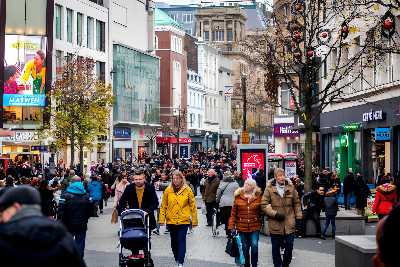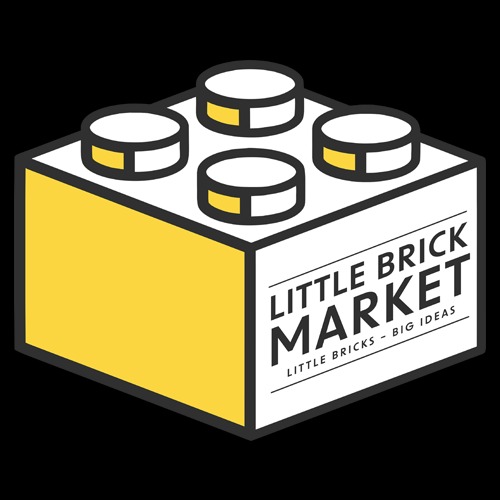
In terms of application, the global market is categorized into residential buildings, commercial buildings, infrastructure, paths, parterre, and landscaping. The residential buildings segment held a large share of the market in 2022 due to the economic expansion and growing middle class and working population. This increases the demand for bricks for constructing residential buildings.The commercial buildings segment is anticipated to grow at a robust pace in the coming years owing to the rapid urbanization and growing population.
- Bricks are not used for making buildings in high seismic zones as they are very likely to be damaged during earthquakes and are able to cause a large number of human fatalities.
- The success of the brick sector in adapting to new technologies and market requirements will be the determinant factor for its course toward development in the long run.
- Building applications accounted for 60% of brick market share in 2024, reflecting masonry’s historic role in structural walls and facades.
- In residential production, the surge is fueled by way of urbanization and the need for less costly housing, especially in emerging economies like India and China.
- WILCO works with 3rd parties and resellers directly to collect and aggregate sales figures on the LEGO market and secondhand LEGO economy.
- Artistic designs are added to landscapes, therefore bringing out the other dimension of the bricks apart from their traditional construction use, in a very unique way.
Brick Market By Type Shipment Analysis By Value From 2018 To 2030:
Government projects assisting housing infrastructure and growing consumer desire for single-own family houses in addition propel this demand. In the infrastructure sector, huge-scale initiatives such as airports, roads, and public utilities are riding the want for durable and price-powerful building materials. The increase in infrastructure is particularly strong in growing areas, in which urbanization necessitates new construction and preservation tasks. This fashion is anticipated to keep, supported by means of authority’s guidelines and investments geared toward modernizing and increasing urban infrastructure. According to the application, the residential building segment held a 32% revenue share in 2024. The residential building segment in the bricks market refers to the use of bricks in the construction of houses and residential complexes.
Fishery Machinery Manufacturing Market Report Global Forecast From 2025 To 2033
Other brick innovations include interlocking designs for more rapid assembly and lighter types for seismic regions attributed to improving overall structural performance. In the dynamic flow of global construction materials, bricks emerge at the core because of their durability, versatility, and sustainability. Bricks form a greatly diversified market globally, with different types meeting special construction needs. Clay bricks, sand lime bricks, fly-ash clay bricks, and many such specialized variants fulfill various conditions of the environment and architectural needs. The global brick market remains an integral part within the structure of the construction industry, providing sustainable solutions that blend both tradition and innovation.
Malaysia Bricks And Blocks Market Synopsis
Of course, that evolution marks all the more the resilience and adaptability true to this market and its relevance in a very dynamic and increasingly eco-conscious world. The brick market is an important sub-sector in the construction industry bearing important roles in fulfilling infrastructure needs throughout the world. From time immemorial, the bricks having strength, flexibility, availability and cost advantages have remained the most popular construction materials available in the market inspite of the availability of superior construction materials these days. South America’s brick market pivots on warehouse and logistics developments catalyzed by e-commerce. Brazil accelerates industrial parks along new highways, increasing demand for large-format blocks that reduce lay-rate time. Middle East and Africa, although smaller today, hold the loftiest upside as 70% of buildings required by 2040 are yet to be built.
Welcome To The Brick Market

They come in different sizes and are available in different colours and textures, which make them suitable for roofing of a variety of building designs. Understanding the properties of bricks as a construction material gives them a high rating as a construction material to this day. Europe trails in growth but leads innovation as the CBAM exposes carbon-intensive imports and rewards local low-carbon pioneers.
- The Brick Market was the last of his confirmed works, and is shows the influence that English architecture had on his designs.
- The demand for sustainable and energy-efficient buildings has led to an increased demand for clay and concrete bricks, creating opportunities for growth in the Bricks market.
- The brick market presents a lot of promise with the emergence of economies that are rapidly industrializing and developing the necessary infrastructure.
- With a focus on durability and resilience, North America continues to be a significant market for bricks, particularly in residential and commercial construction projects.
- Thin-brick slips and mechanically fixed veneers let masonry suppliers stay relevant, yet overall unit demand dips where full-bed bricks are displaced.
Brick Lane Market Vintage- The Vintage Market

The Asia Pacific region is expected to see significant growth in the Bricks market in the coming years due to the growth of the construction industry in the region. Increasing government expenditure for reconstruction & repair of infrastructureis expected to drive the market. Bricks are used for the reconstruction & repair of infrastructure as they are weather and age-proof and are able to withstand even the harshest conditions, from cyclones and severe marine environments to wildfire-prone areas. Look no further than this Birmingham market as you’ll find a number of homeware stalls to turn that house or flat of yours into a home. Sargent Vintage Interiors sells upcycled vintage furniture and Sarah Jones Antiques has everything in the world of antiques whether it be a rug or a bit of taxidermy… Plus, there’s Inland House offering vases, trinket trays and wicker furniture.
What Is The Current Market Situation In The Bricks Market?
1793 was a major year for the Brick Market as the upper floors of the building were leased to Joseph Harper and Alexander Placide for the construction of a theater. The men proposed to make considerable alterations to the very structure of the interior, but Placide agreed to undertake these renovations at his own expense. Other performers, unrelated to Harper and Powell, also used the space, but not on a regular basis. Bricks are fundamental structural components usually created from clay, shale or concrete and mortar is a binding material normally from a cement composition. They used in structures to develop walls, pavements and various other constructions and is in the form of rectangular blocks.
The brick market size for path and paving solutions, however, is expanding at a 3.14% CAGR as households invest in outdoor upgrades and municipalities retrofit sidewalks to endure heavier pedestrian flows. Architectural innovation is creating significant opportunities in the bricks market by redefining traditional construction practices. Collaborations between architects and brick manufacturers have led to the development of innovative designs that go beyond conventional rectangular shapes. Bricks are now available in unique forms, sizes, and textures, allowing architects to explore creative possibilities in modern construction. Traditional red clay bricks are widely used, but there is also a growing trend toward eco-friendly bricks that align with China’s efforts to reduce environmental impact in construction.
The remainder of the brick economy is driven by demand for used sets, individual LEGO bricks and pieces, and minifigures. Once a former service yard and now a street food hotspot, this food market is one of Brick Lanes most popular spots. You’ll be spoilt for choice with the food trucks at Ely’s Yard serve up piping hot burgers, chicken wings, burritos, jerk chicken, Argentinian steaks, and much much more. The food market is also home to some public permanent artworks by the likes of Banksy, Shepard Fairey, and Invader Vhils, and also hosts a variety of activities and themed events such as London’s first City Beach and brand pop-ups. The market is open seven days a week from 11am to 11pm so you can always count on Ely’s Yard for some good grub if you’re in the area. If you’re looking for some bric-a-brac treasure, hunting for a bargain, antique shopping, or in the mood for endless street food options then the bustling Brick Lane Market is the place to be.
Breaking Down The Brick Market: LEGO Parts Vs LEGO Sets Vs LEGO Minifigures – What Do The People Want?
At Introspective Market Research (IMR) Pvt Ltd, we deliver accurate and reliable business consulting solutions and market research reports tailored to various industries. Our focus on authenticity and innovation empowers businesses with data-driven insights for informed decision-making. Carbon-tax exposure from the EU ETS and the Carbon Border Adjustment Mechanism raises production costs, pushing firms to adopt low-carbon fuels and efficient kilns. The Museum of Newport History is a history museum in the Old Brick Market building in the heart of Newport, Rhode Island, United States.
Such bricks are generally made from recycled materials or produced by energy-efficient means and, thus, are more attractive to green consumers and regulatory institutions. Some of the growth factors for the brick market include the fact that an almost indispensable use in construction across regions, if not the globe, is noticed, owing to its durability and versatility. One of the driving factors for using brick is its capacity to sustain harsh weather conditions and provide high structural efficiencies. Besides, an attractive aesthetic appearance is appreciated by all, right from residential structures to commercial ones. The Global Brick Market comprises an integral segment of the value chain of the construction materials industry; it lies at the confluence of classic artisanship and modern engineering. Bricks, by their very nature, have taken on a significant role in building structures for centuries and remain an essential element of architectural landscapes worldwide.

Additionally, the use of substances with better thermal insulation houses allows in attaining electricity financial savings over a constructing’s lifecycle. As each regulatory framework and client options shift toward sustainability, producers are compelled to undertake greener strategies, riding increase inside the market for green concrete blocks and bricks. Urbanization trends significantly drive market demand for bricks as the global population increasingly gravitates towards urban areas. With over half the world residing in cities, urbanization fuels a surge in construction projects, emphasizing the need for durable and versatile building materials like bricks.



